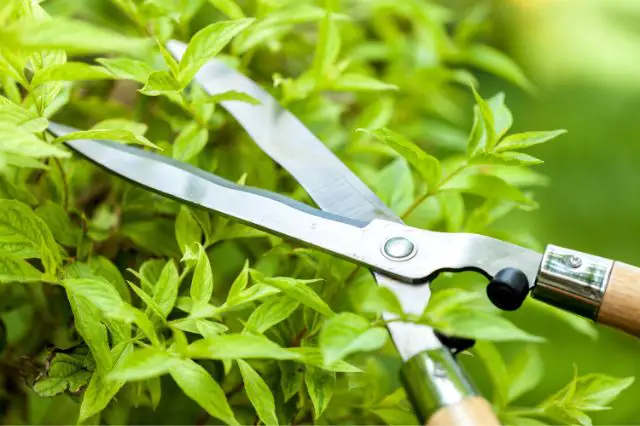Why Do We Need Pruning? Importance and Benefits Explained

Pruning, a fundamental practice in horticulture and arboriculture, plays a pivotal role in maintaining the health, aesthetics, and safety of trees and plants. This deliberate and strategic removal of branches and foliage serves a multitude of purposes, each contributing to the overall vitality and longevity of vegetation.
The Multi-Faceted Significance of Pruning
At its core, pruning serves as a proactive measure to facilitate the well-being of plants. The removal of dead, diseased, or damaged branches stems from the spread of decay and disease, enabling the plant to allocate its resources toward healthy growth. This selective approach ensures that the plant’s energy is concentrated on assembling new leaves, flowers, and fruit, rather than trying to restore or nourish compromised branches.
Pruning also contributes to the structural integrity of plants. Removing crowded or crossing branches minimizes friction and rubbing, which can lead to wounds and potential entry points for pathogens. By creating a well-spaced framework of branches, plants are better equipped to withstand wind, snow, and other environmental stressors. This not only safeguards the plant’s physical structure but also reduces the risk of branches breaking and posing hazards to property and people.
The Aesthetic and Functional Benefits
Beyond the functional advantages, pruning significantly enhances the visual appeal of landscapes and gardens. Skillful pruning can shape plants into desired forms, accentuating their natural beauty and adding an artistic element to outdoor spaces. Well-pruned plants often exhibit a balance between foliage, flowers, and structure, creating visually pleasing focal points in gardens and enhancing curb appeal in urban environments.
Furthermore, pruning encourages enhanced air circulation and light penetration throughout a plant’s canopy. This increased exposure to sunlight promotes photosynthesis, which is crucial for the production of energy and nutrients. Adequate air circulation lowers humidity and dampness, assembling an environment less conducive to the development of fungal diseases.
Timing and Techniques
Pruning is not a one-size-fits-all endeavor; it requires a comprehensive understanding of plant species, growth patterns, and optimal timing. Deciduous trees are typically pruned during their dormant period in late winter or early spring, while flowering shrubs may benefit from post-bloom pruning. Evergreens, on the other hand, can be pruned throughout the year.
Different pruning techniques are employed depending on the desired outcome. Thinning involves the removal of entire branches to create a more open structure while heading cuts trim back specific branches to stimulate new growth. Careful consideration of these techniques ensures that pruning aligns with the plant’s natural growth tendencies and overall objectives.
Avoiding Pitfalls: Professional Pruning
While light pruning can be undertaken by homeowners, significant or complex pruning tasks are best entrusted to experienced professionals. Certified arborists and horticulturists possess the expertise to evaluate a plant’s health, structure, and needs accurately. They can identify potential issues, such as pests, diseases, or weak branches, that may go unnoticed by non-experts.
Professional pruning not only ensures that the right cuts are made but also mitigates the risk of over-pruning, which can stress plants and hinder their growth. Improper cuts can lead to slow healing, inviting diseases and pests. Expert practitioners employ proper tools and techniques to create clean cuts that promote swift wound closure and minimize harm.
Environmental Considerations and Ecosystem Health
Pruning also holds importance within the broader context of environmental sustainability. By maintaining the health of trees and plants in urban and natural landscapes, pruning contributes to the general well-being of ecosystems. Healthy vegetation helps improve air quality by filtering pollutants and releasing oxygen, creating a more pleasant and sustainable environment for humans and wildlife alike.
Cultivating Future Growth
Pruning, when executed with foresight and care, sets the stage for future growth and development. Strategic pruning encourages plants to direct their energy toward producing strong new branches, vigorous shoots, and abundant flowers or fruits. This proactive approach to shaping plants ensures that they continue to thrive and flourish in the long run, providing lasting benefits for generations to come.
The art and science of pruning underscore its indispensable role in the realm of plant care and landscaping. From enhancing the health and structure of plants to fostering aesthetic beauty and environmental sustainability, pruning serves as a bridge between human intention and nature’s innate vitality. Its multifaceted significance goes beyond the physical act of cutting; it embodies a deep understanding of plant physiology, growth patterns, and ecological balance.
By adhering to proper techniques, seeking professional expertise when needed, and recognizing the long-term benefits for both immediate landscapes and the broader environment, we ensure that pruning remains an enduring practice that nurtures the flourishing of plant life and enriches the tapestry of our natural world. If you are looking for a professional, you should consider ArborPro Tree Experts service in Portland.





It’s nice that you mentioned how you could significantly enhance the visual appeal of landscapes and gardens with pruning. Our garden looks very messy right now, so I think we should pay some attention to it now. So with that in mind, we need to call a tree pruning expert this weekend.